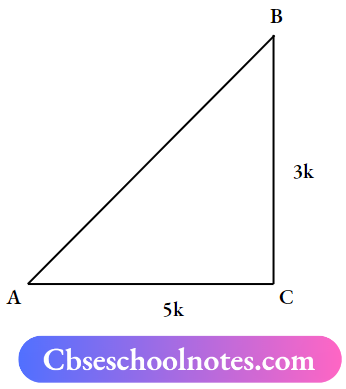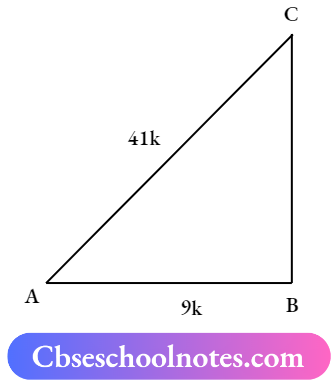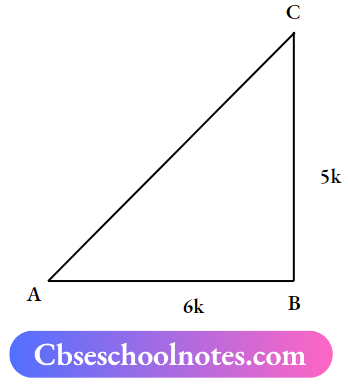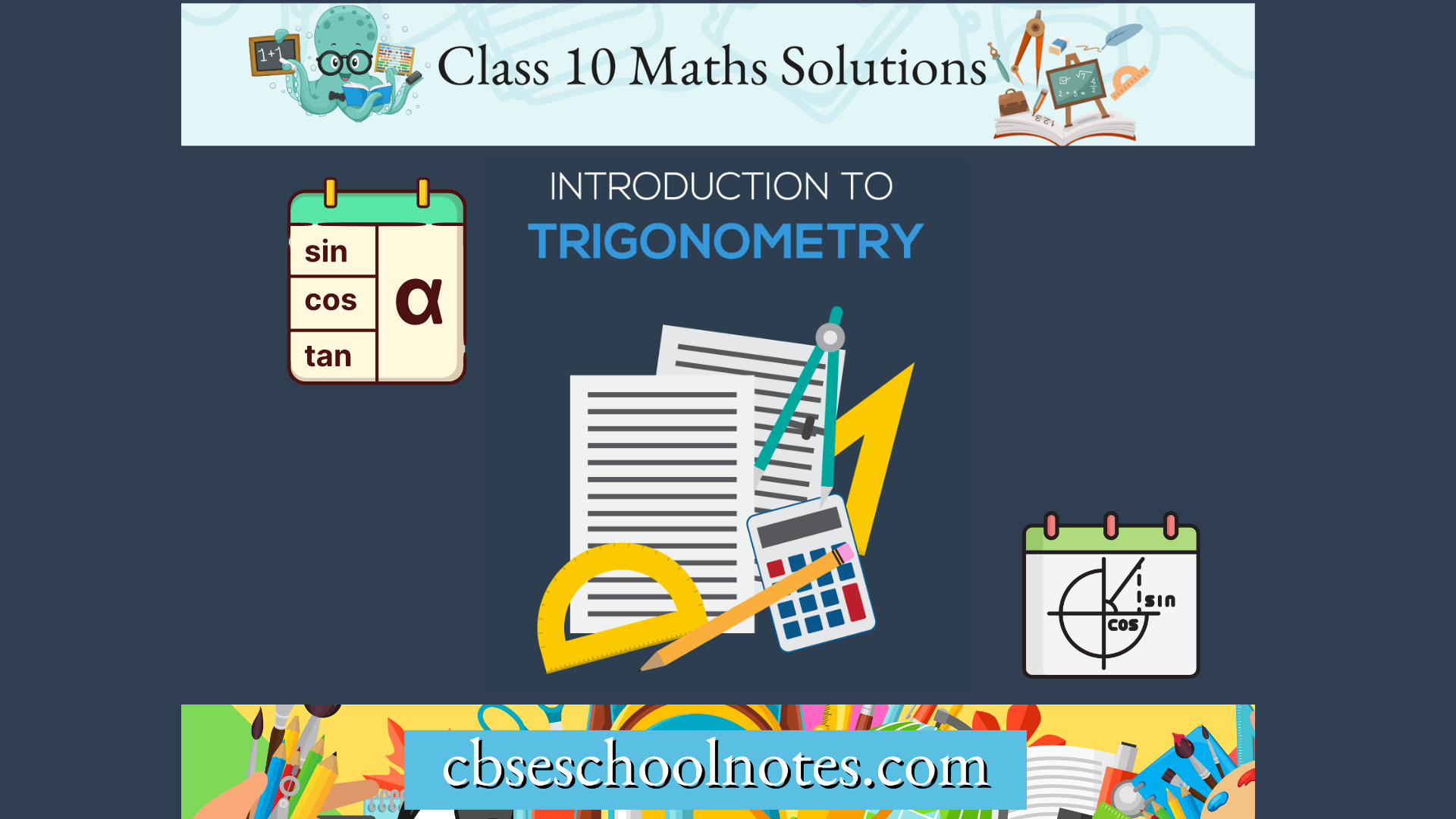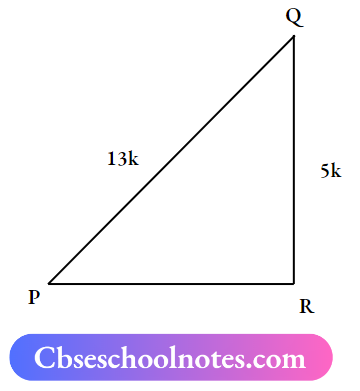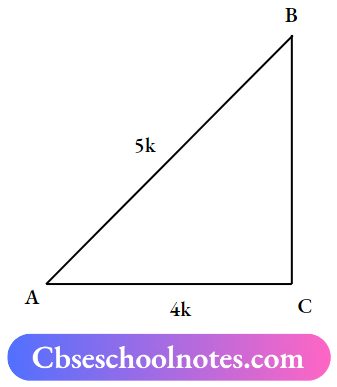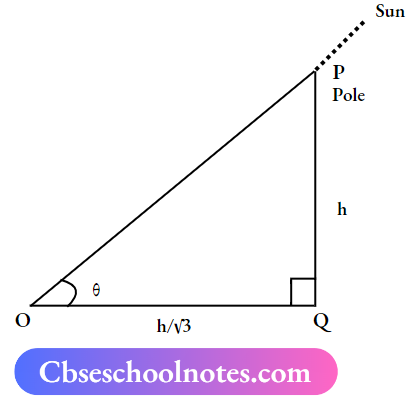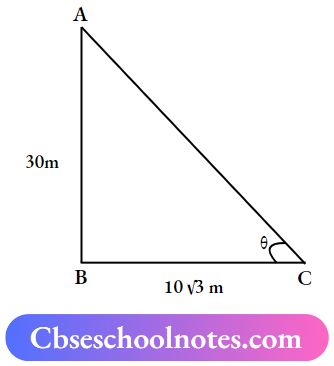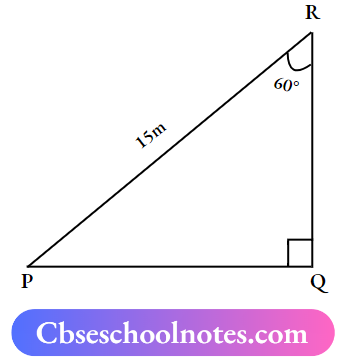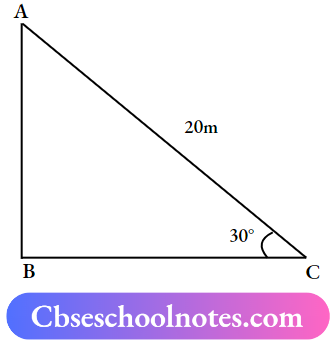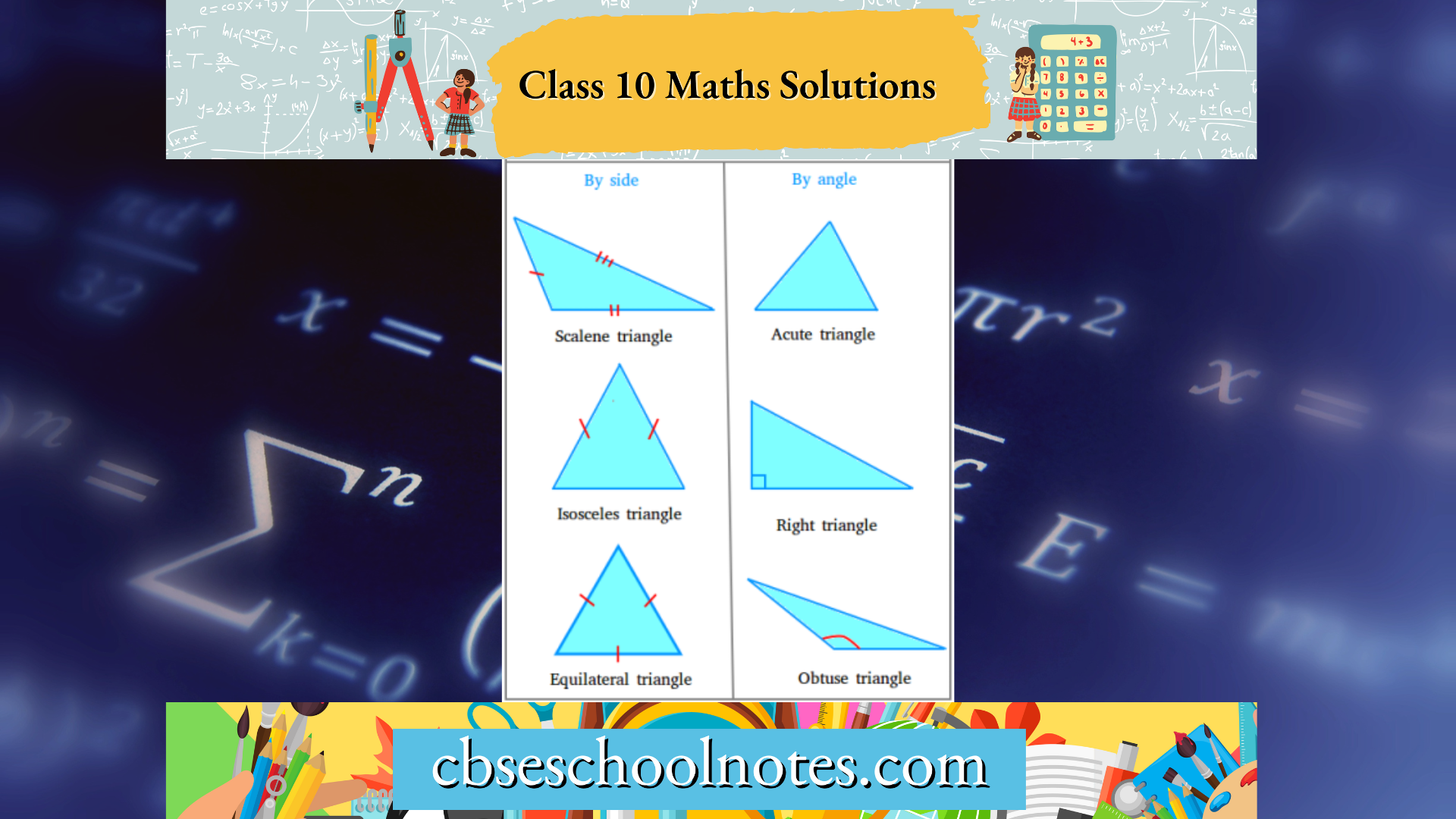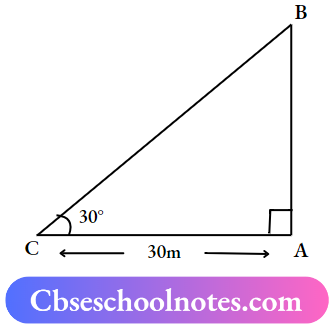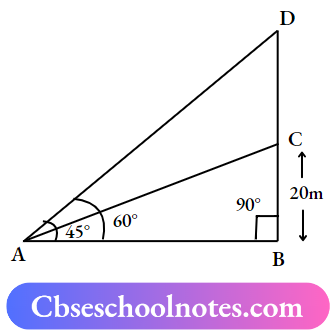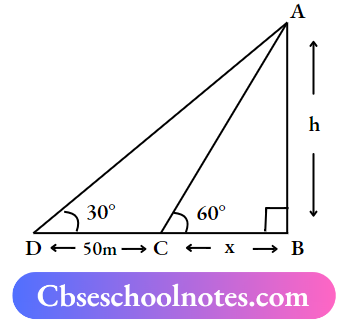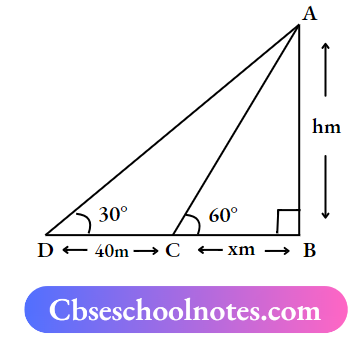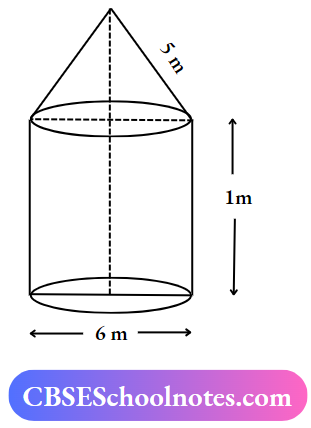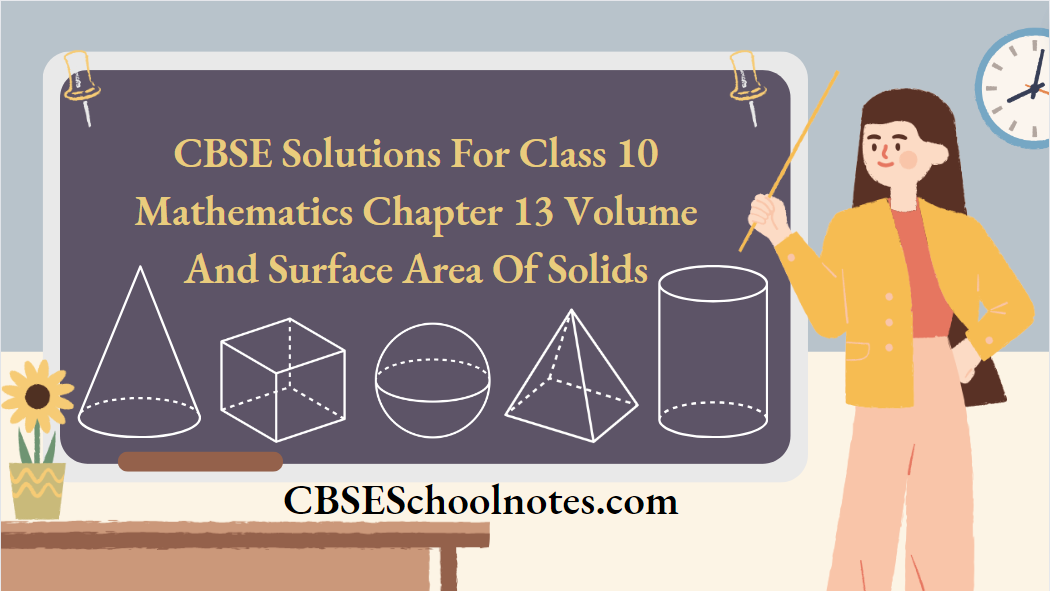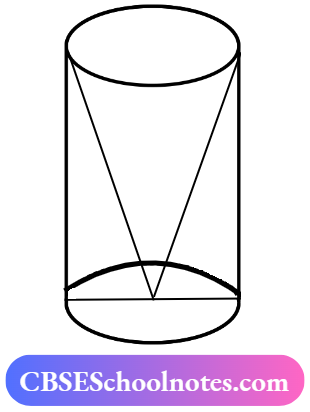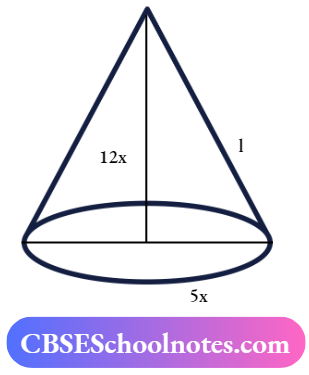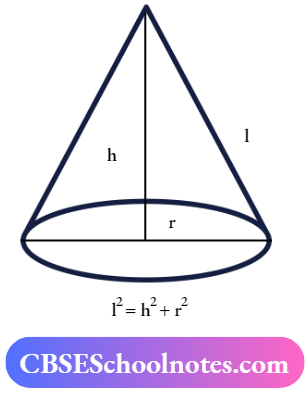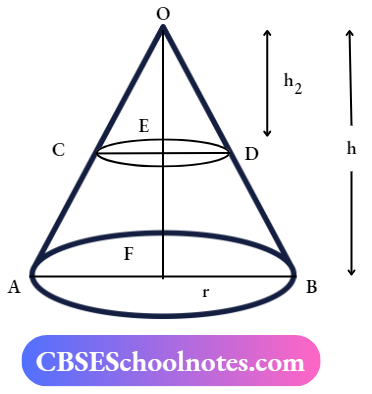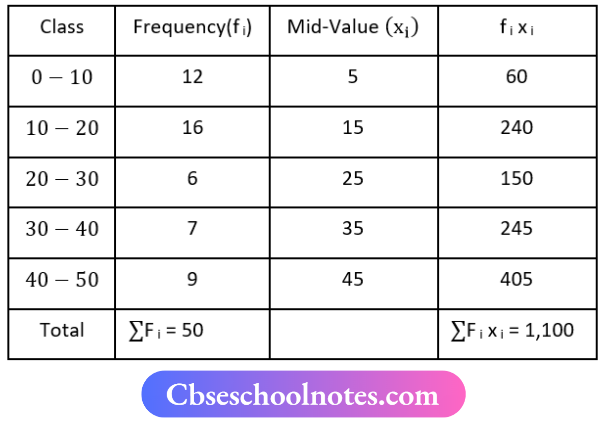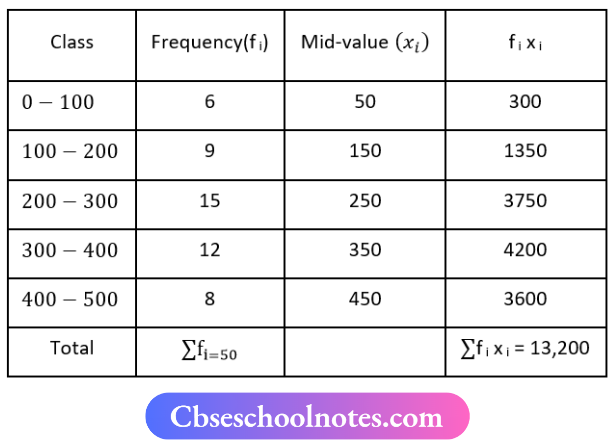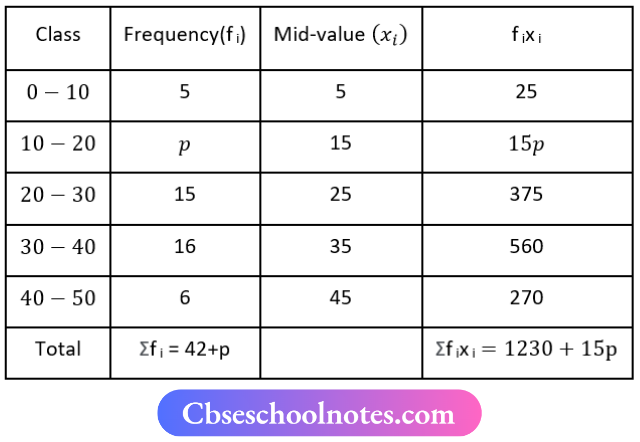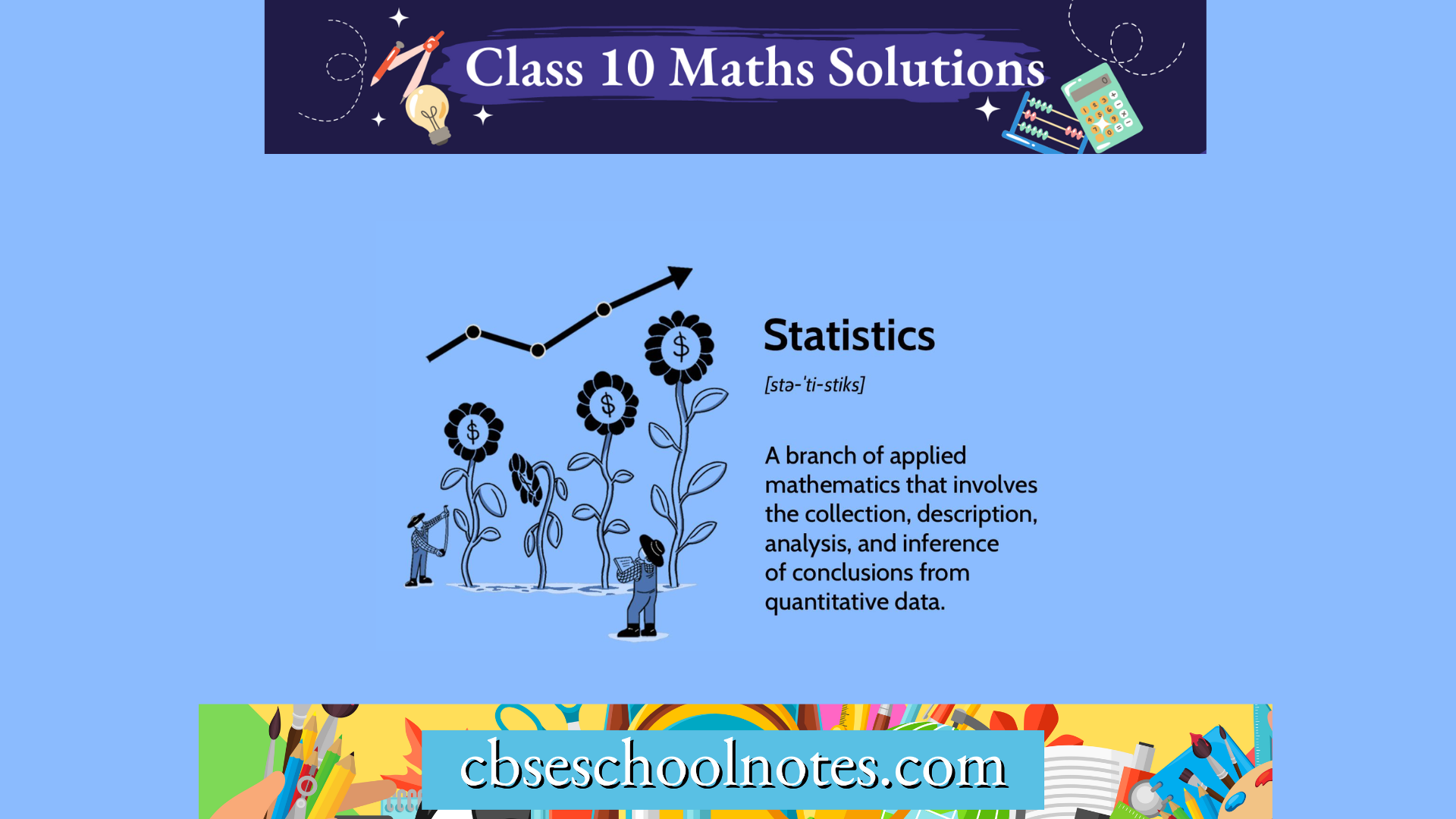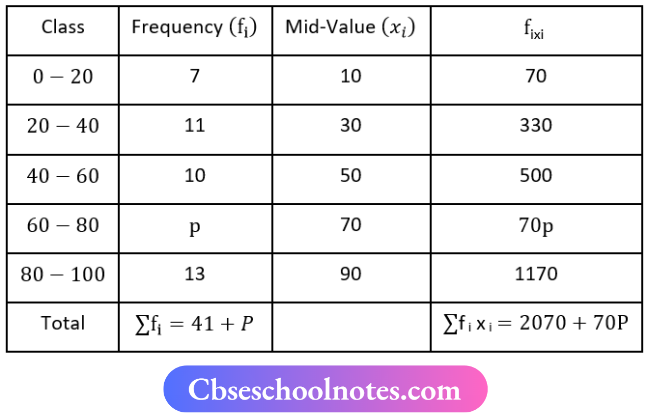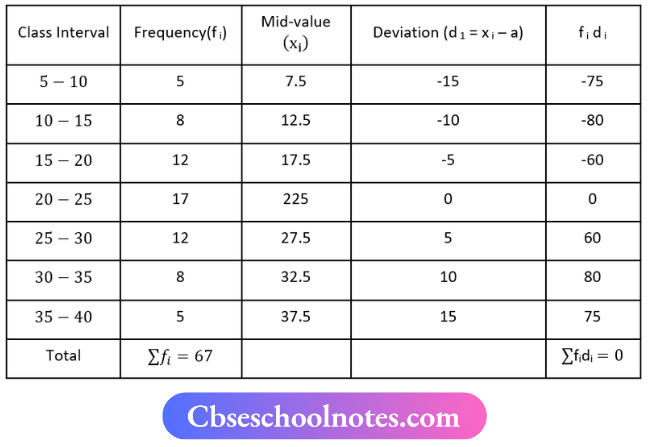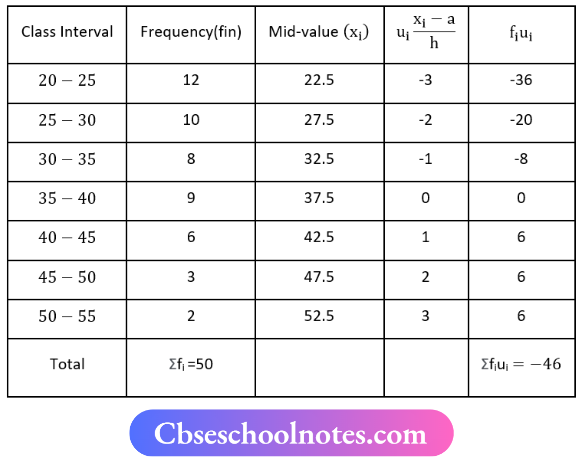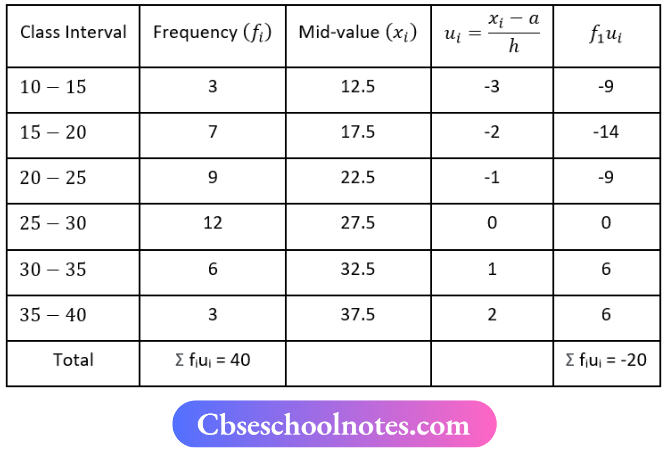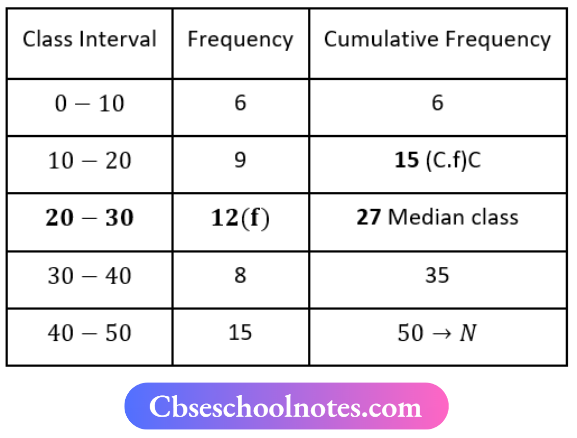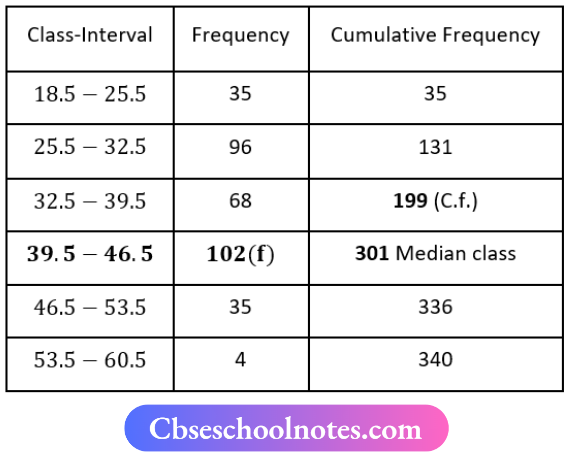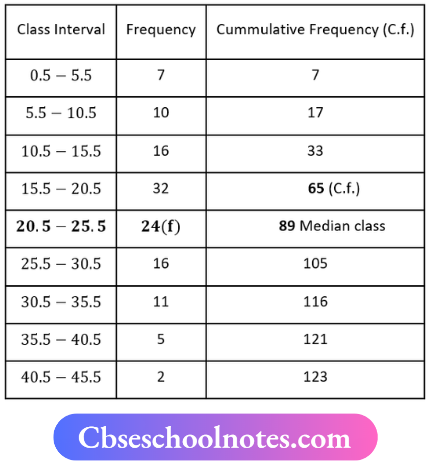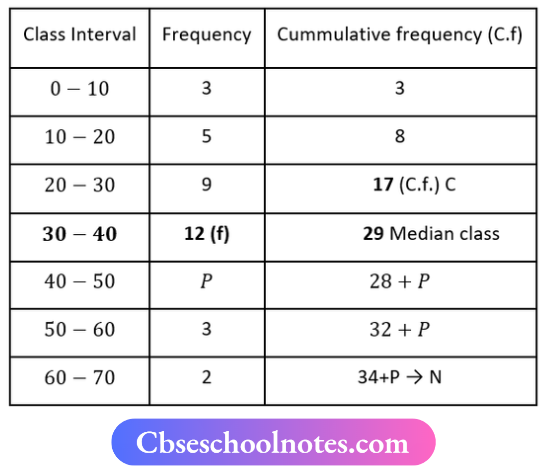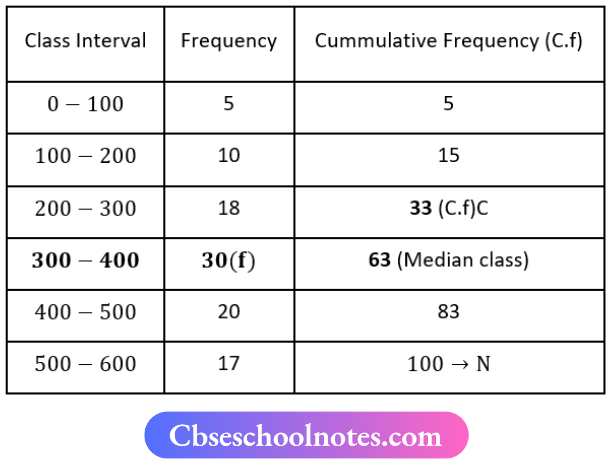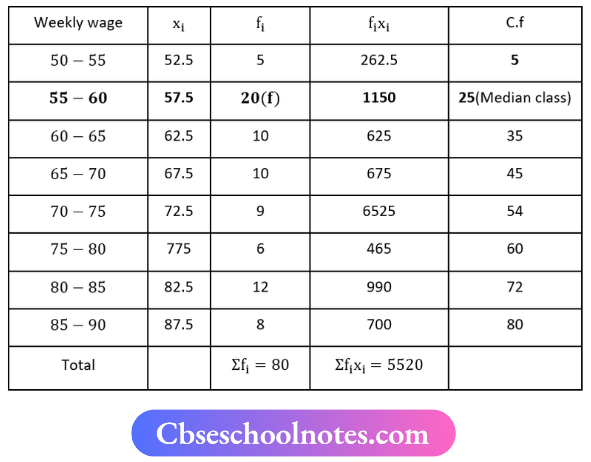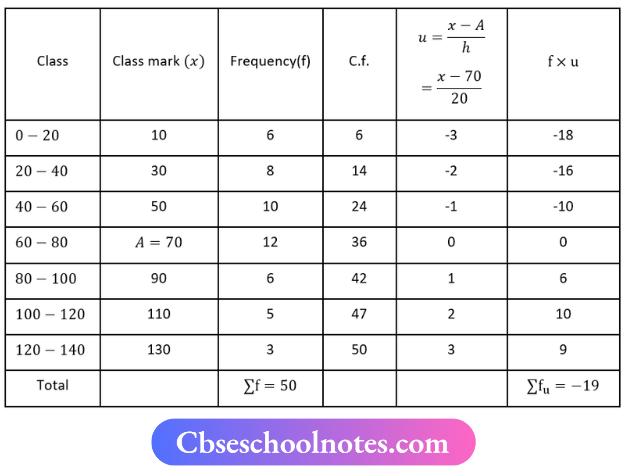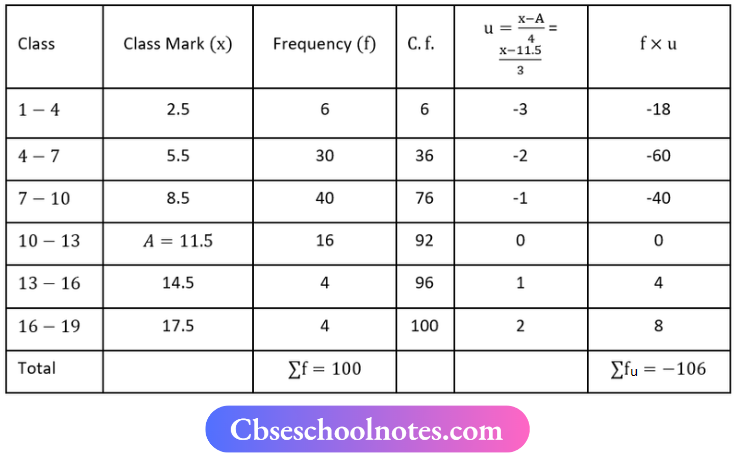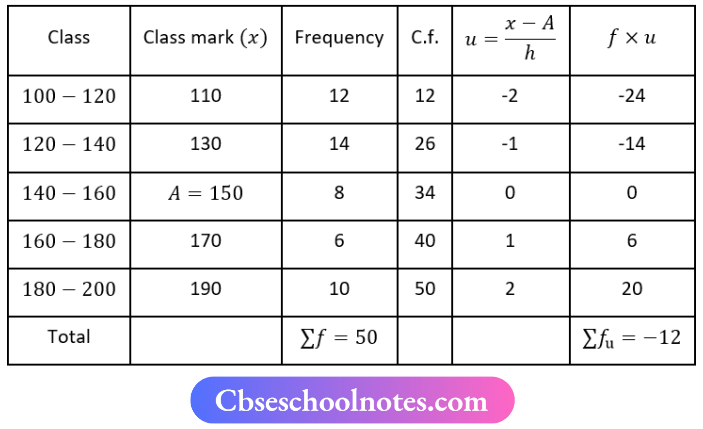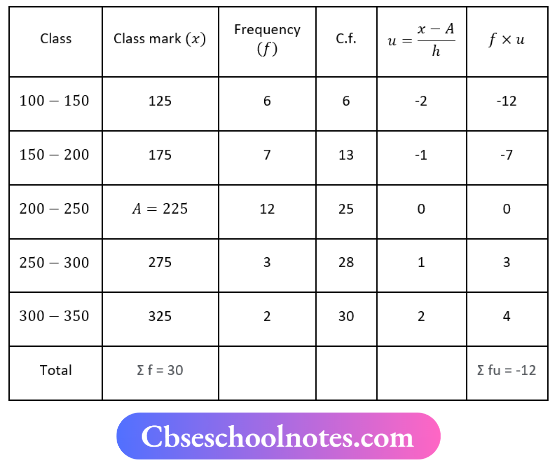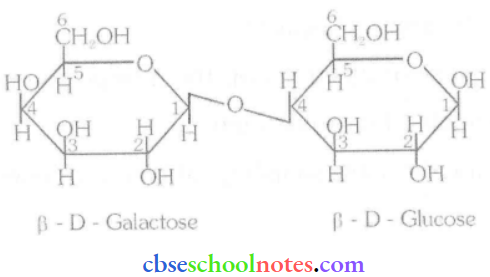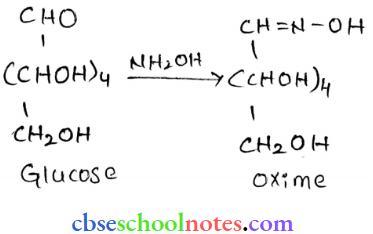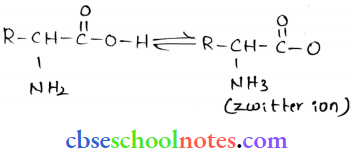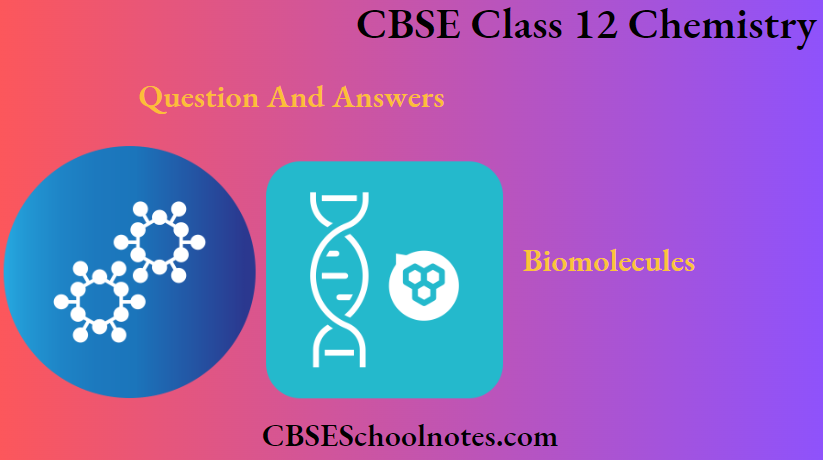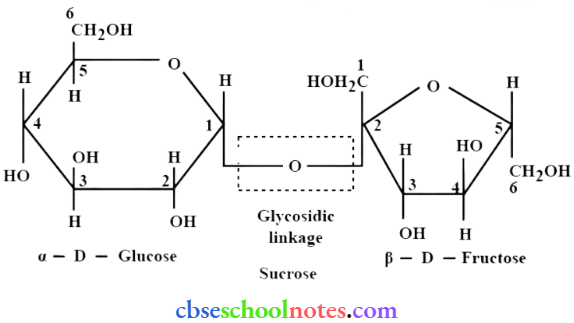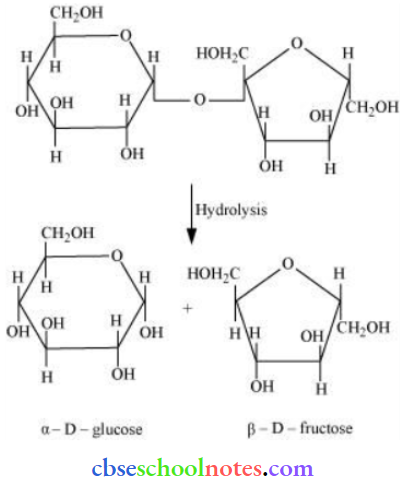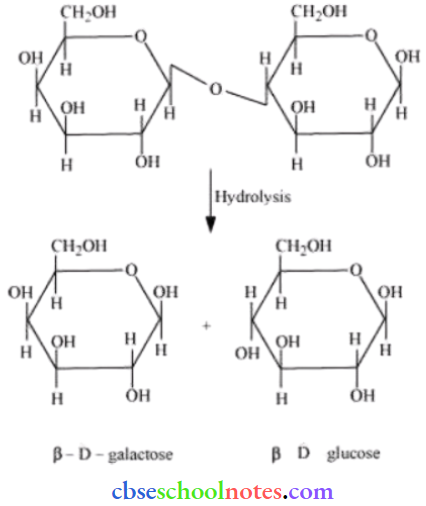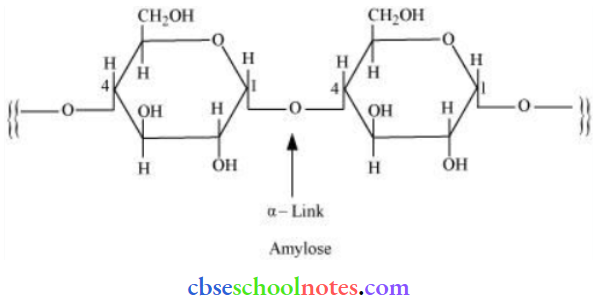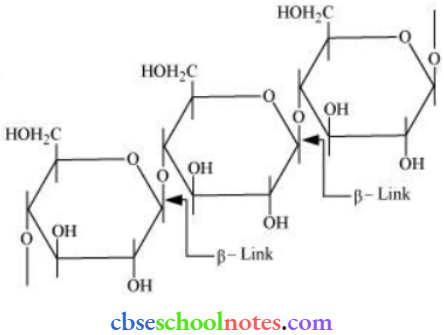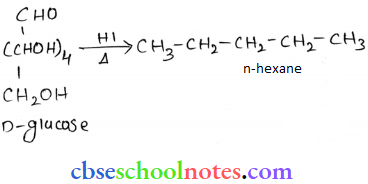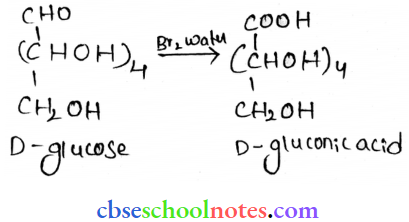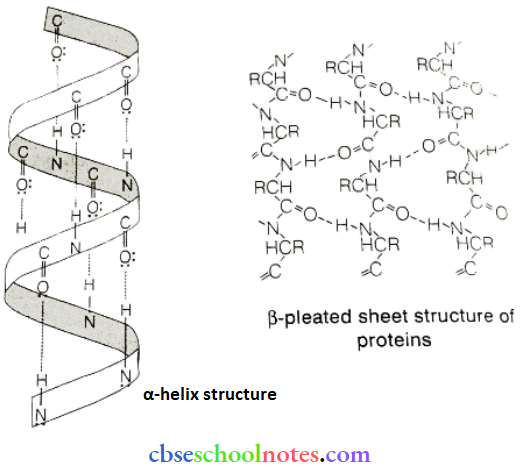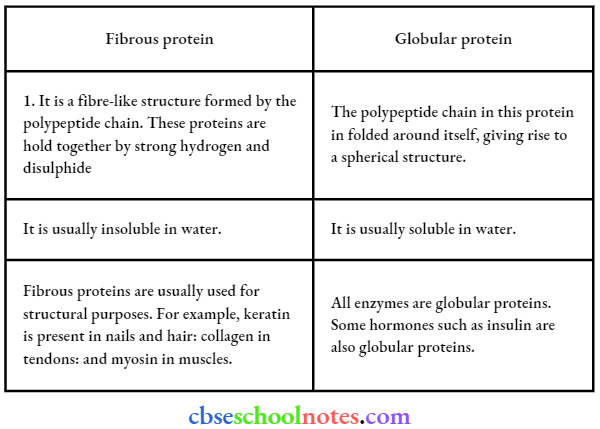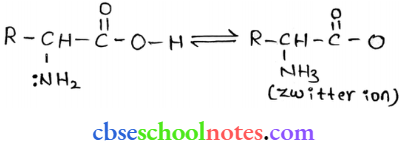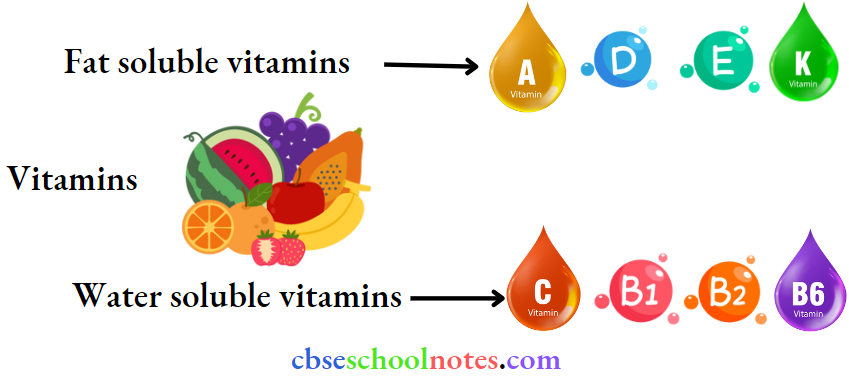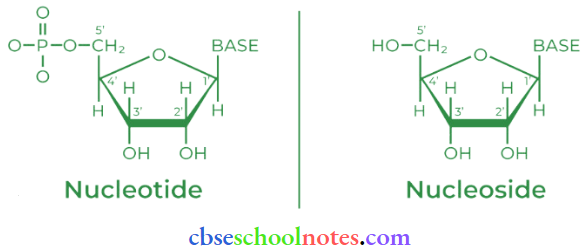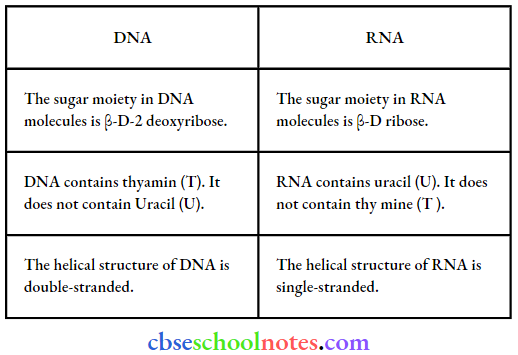CBSE Class 10 Science Chapter 8 How do Organisms Reproduce
Sexual Reproduction In Humans:
CBSE Class 10 Science Chapter 8 How do Organisms Reproduce Short Question And Answers
Question 1. What is the importance of DNA copying in reproduction?
Answer:
Reproducing organisms create new individuals that look very much like themselves. The daughter organisms and their parents look similar because their body design is similar.
- Reproduction at its most basic level involves making copies or the blueprint of the body design. The chromosomes in the nucleus of a cell contain information for the inheritance of features from parents to the next generation in the form of DNA (Deoxyribonucleic Acid, molecules).
- So, reproducing cells prepare copies of DNA molecules to keep one DNA copy with the parent cell and other copy/copies to pass on to the next generation/daughter cells.
Read and Learn More CBSE Class 10 Science Short Answer Questions
Question 2. Why is variation beneficial to the species but not necessary for the individual?
Answer:
A variation may not be beneficial for an individual that is not suitable for the niche. In this case, an individual or a few variants may not survive. This does not affect the existence of a species.
- Variations are useful for the survival of species in changed environmental situations.
- For example, if a population of reproducing organisms were suited to a particular niche (well-defined place of abode) and if the niche is drastically changed, the population could be wiped out.
- However, if some variations were to be present in a few individuals in these populations, there would be some chance for them to survive.
Question 3. How does binary fission differ from multiple fission?
Answer:

Question 4. How will an organism be benefited if it reproduces through spores?
Answer:
The nuclei in the hypha of fungus like Mucor and Rhizopus, get surrounded by a bit of cytoplasm and get a thick wall. This wall protects the spore during unfavourable conditions.
When the favourable conditions return, the spores develop into new hyphae. Thus, spores help the fungus tide over unfavourable conditions.
Question 5. Can you think of reasons why more complex organisms cannot give rise to new individuals through regeneration?
Answer:
In highly developed multicellular organisms, different cell types perform different specialised functions. Reproduction in such organisms is also the function of a specific cell type.
- If the organism itself consists of many cell types, reproduction by regeneration or fragmentation cannot be achieved.
- In multicellular organisms like Hydra and Planaria regeneration is carried out by specialised cells.
- These cells proliferate and make large numbers of cells. From this mass of cells, different cells change to become various cell types and tissues.
- Such specialised cells which can regenerate or develop a new individual from their body part do not exist in complex organisms.
Question 6. Why is vegetative propagation practised for growing some types of plants?
Answer:
Reasons for growing some types of plants by vegetative propagation:
- Plants raised by vegetative propagation can bear flowers and fruits earlier than those produced from seeds.
- Such methods also make possible the propagation of plants such as bananas, oranges, roses and jasmine that have lost the capacity to produce seeds.
- All plants produced by this method are genetically similar enough to the parent plant to have its all characteristics.
Question 7. Why is DNA copying an essential part of the process of reproduction?
Answer:
Reproducing organisms create new individuals that look very much like themselves. They look similar because their body designs are similar.
- The DNA present in chromosomes located in the nucleus of a cell contains information for the inheritance of features from parents to the next generation.
- So, reproducing cells creates two copies of the DNA. One copy of DNA remains in the reproducing original cell. The other copy of DNA is passed to the daughter cell formed by the parent having additional cellular apparatus.
Question 8. How is the process of pollination different from fertilisation?
Answer:
Pollination is the process by which the pollen from another reaches the stigma of the flower of the same species. Fertilisation is the process in which the male gamete fuses with the egg to form a zygote.
Question 9. What is the role of the seminal vesicles and the prostate gland?
Answer:
Seminal vesicles secrete a viscous fluid which forms most of the part of semen. It also lubricates the passage through which the sperms travel.
- This fluid also protects the sperm from the acids normally present in the urethra and female reproductive duct. The prostate gland produces prostatic fluid which is discharged into the urethra through more than two dozen fine ducts.
- There is more secretion during sexual act when they are forcefully ejected by contraction of muscular and elastic tissues.
Question 10. What are the changes seen in girls at the time of puberty?
Answer:
The females show development of breasts, darkening of nipples, menstruation and growth of public hair.
Question 11. How does the embryo get nourishment inside the mother’s body?
Answer:
After fertilisation, the lining of the uterus thickens and is richly supplied with blood to nourish the growing embryo.
- The embryo gets nutrition from the mother’s blood with the help of a special tissue called the placenta. This is disc-shaped tissue which is embedded in the uterine wall.
- The placenta contains villi on the embryo’s side of the tissue and blood spaces on the mother’s side surrounding the villi. This provides a large surface area for food and oxygen to pass from the mother to the embryo and waste products from the embryo to the mother’s diseases.
Question 12. If a woman is using a copper-T, will it help protect her from sexually transmitted
Answer:
Copper-T is a contraceptive method which prevents implantation of the zygote inside the uterus. It cannot prevent a woman from sexually transmitted diseases (STDs). STDs are transmitted by contact which cannot be prevented by copper-T.
Question 13. What are the advantages of sexual reproduction over asexual reproduction? Answer:
Sexual reproduction incorporates the process of combining DNA from two different individuals during reproduction.
- Sexual reproduction promotes variation among the offspring of the same parents and provides opportunities for new combinations of characters, thus playing an important role in the origin of new species.
- Asexual reproduction does not require a combination of DNA from two different individuals. So, it does not create variations and does not help in creating new species and evolution.
Question 5. What are the functions performed by the testes in human beings?
Answer:
Testes are the sites for the formation of sperms. They also produce a hormone named testosterone which is responsible for secondary sex characteristics in males.
Question 14. Why does menstruation occur?
Answer:
The ovary releases one egg every month and the uterus prepares for the implantation of the zygote by thickening its walls which are richly supplied by blood vessels.
If the egg is not fertilised, the uterine lining slowly breaks down and comes out through the vagina as blood and mucus. This cycle takes place regularly every month and is known as menstruation and lasts for about two to eight days.
Question 15. Draw a labelled diagram of the longitudinal section of a flower.
Answer:

Question 16. What are the different methods of contraception?
Answer:
The methods used for the regulation of childbirth are:
- Barrier method: In this method, physical devices like condoms, cervical caps and diaphragm are used to prevent sperm from reaching upto the ovum.
- Chemical method: In this method, specific drugs are used by females. These drugs may be (a) oral pills or (b) vaginal pills. Oral pills mainly contain hormones and are called oral contraceptives.
- Intrauterine contraceptive devices (IUCDs): IUCDs like Copper-Tis are placed safely in the uterus by a skilled doctor. IUCDS prevent implantation of the fertilized ovum inside the uterus.
- Surgical method: This method applies to both males and females. In males, a small portion of vas deferens and in females the fallopian tube is surgically removed or ligated (tied). It is known as vasectomy in males which prevents the release of sperm from the testis. In females, it is called tubectomy.
Question 17. How are the modes of reproduction different in unicellular and multicellular organisms?
Answer:
The modes of reproduction in unicellular organisms are:
- Binary fission is found in unicellular animals like Amoeba, Paramecium, Euglena, etc. After attaining an optimum size the adult individual undergoes a simple division into two daughters of equal size. It consists of the division of the nucleus followed by the cleavage of cytoplasm into equal parts, each having a daughter nucleus. Binary fission can occur in any place in Amoeba.
- Multiple fission is also a mode of asexual reproduction found in unicellular animals or protozoans, e.g., Plasmodium, and Monocystis. The nucleus of the parent cell undergoes repeated divisions to produce several daughter nuclei. The cytoplasm cleaves around each nucleus to form many daughter cells. Ultimately under favourable conditions, the parent cell membrane ruptures and daughter individuals are released. Sometimes, the daughter cells derived from multiple fission develop resistant coverings to produce spores. The process is called sporulation.
- Budding: Some unicellular organisms such as yeast can put out small buds that separate and grow further.
The mode of reproduction in multicellular organisms
- Fragmentation: Simple multicellular organisms such as spirogyra simply break up into smaller pieces upon maturation. These pieces, known as fragments, grow into new individuals.
- Regeneration: In some fully differentiated organisms—an individual, such as Hydra and Planaria, if somehow cut or broken up into many pieces, many of these pieces grow into separate individuals, Regeneration is carried out by specialised cells.
- Budding: Organisms, such as Hydra use regenerative cells for reproduction in the process of budding. In Hydra, an outgrowth, called bud, develops at a specific site. When their buds mature, they detach from the parent body and become new independent individuals.
- Sexual reproduction: This mode of reproduction is common in complex multicellular organisms. In this mode of sexual reproduction, both sexes-males and females- are needed to produce a new generation. Thus, the sexual mode of reproduction involves two individuals.
Question 18. How does reproduction help in providing stability to populations of species?
Answer:
Variations in the population that help the population of a species to tide over adverse environmental conditions are induced by reproduction, especially by sexual reproduction. These variants are adapted to the changing environment of the niche. Reproduction also helps generate copies of individuals that are suited to a particular environment which is existing.
Question 19. What could be the reasons for adopting contraceptive methods?
Answer:
Reasons for adopting contraceptive methods
- The sexual act always has the potential to lead to pregnancy. If a woman (mother) is not in good health or mentally unprepared, it will cause adverse effects on the mother and the foetus.
- There are many diseases such as AIDS, gonorrhoea, and syphilis which are transmitted through sexual acts. These can be prevented by the use of contraceptives.
- The reproduction process causes an increase in population if adequate measures are not taken to prevent pregnancy. The increase in population in our country is increasing exponentially. This puts strains on the natural resources of the country and is a major cause of poverty in our country.
Thus, adopting contraceptives can prevent:
- Unwanted pregnancies.
- Spread of sexually transmitted diseases (STDs) and lethal diseases like AIDS and HIV.
- Frequent pregnancies may cause health hazards to the mother and her infant.
Question 20. List any two modes of asexual reproduction in animals. Under which mode of reproduction is vegetative propagation placed and why? List two advantages of vegetative propagation.
Answer:
Two asexual modes of reproduction in animals are:
Fission/Fragmentation/Budding/Regeneration (Any Two) Vegetative propagation is under an asexual mode of reproduction.
Reasons: Reproductive part of the plant not involved/Single parent involved.
Advantages of vegetative propagation (Any two)
- Plants raised can bear flowers and fruits earlier than those produced from seeds.
- Plants that have lost the capacity to produce seeds can be produced.
- All plants produced are genetically similar to the parent plant.
Question 21. State two examples of each of the following:
- Plants having unisexual flowers
- Agents of pollination
- Physical changes that are common to both boys and girls.
Answer:
- Papaya, watermelon
- Wind, water, air, insects (any two)
- Increase in height and weight. (Body becomes larger)
- Thinner hair appears on the legs, arms as well as on the face.
- Skin becomes oily and pimples develop.
Question 22. What is the placenta? State its function in human females.
Answer:
Placenta: A special tissue embedded in the uterus wall with the help of which the human embryo gets nutrition from the mother’s blood.
Functions:
- To provide a large surface area for glucose and O2 to pass through the mother’s blood to the embryo.
- To metabolic waste generated by the embryo is removed through the placenta into the mother’s blood.
Question 23. Variations are important for the survival of species over time. Justify this statement with reasons.
Answer:
Variations help the individuals to survive even after the drastic changes occur in nature. These changes may be in the niche, temperature, salinity water levels, etc.
Question 24. Mention the changes seen in the girls that depict the aspect of the sexual maturation of the body.
Answer:
- Growth of pubic hair. (armpits and the genital area)
- Breast size begins to increase with darkening of the skin of the nipples at the tips of the breast.
- The hips widen.
- Menstruation starts.
Question 25. Justify the following statements:
- Variations are beneficial for the species over some time.
- New offspring produced are similar to their parents but not identical.
- Binary fission is different in Amoeba and Leishmania.
Answer:
- Variations are beneficial for species because they give survival advantages even in adverse environmental conditions.
- Similar-Same DNA Not identical-Due to variation during DNA copying
- Amoeba-Any plane; Leishmania-definite orientation.
Question 26. Name and explain the method by which rhizopus reproduces.
Answer:
Rhizopus reproduces by spore formation.

Method:
It is a method of asexual reproduction. Spores are produced in a structure called sporangium. The nucleus divides several times within the sporangium and each nucleus with a bit of cytoplasm, develops into a spore.
Question 27. What is the effect of DNA copying, which is not perfectly accurate, on the reproduction process? How does the amount of DNA remain constant though each new generation is a combination of DNA copies of two individuals?
Answer:
- DNA copying leads to more variations in the offspring.
- Sexually reproducing organisms have a special lineage of cells which have only half the amount of DNA/half the number of chromosomes as the parent cell.
- When such germ cells fuse, a new individual is formed with the same amount of DNA as that of a parent.
Question 28. Explain how organisms create an exact copy of themselves.
Answer:
To build the copies of DNA or the genetic material, the cells use biochemical reactions. Additional cellular apparatus along with the DNA copies are separated and so a cell divides to give rise to two almost identical cells.
Question 29. State the changes that take place in the uterus after the implantation of a young embryo. How does this embryo get nourishment inside the mother’s body?
Answer:
- The uterine wall thickens, i.e., richly supplied with blood.
- A special tissue called the placenta develops which connects the embryo to the uterine wall that provides nutrients and oxygen to it.
- The placenta is a disc which is embedded in the uterine wall. It contains villi on the embryo’s side of the tissue. On the mother’s side are blood spaces, which surround the villi. This provides a large surface area for glucose and oxygen to pass from the mother to the embryo.
Question 30.
- What is the location of the following:
- DNA in a cell
- Gene
- Expand DNA.
Answer:
- In the nucleus of a cell.
- Located on the chromosomes.
- Deoxyribonucleic acid
Question 31. What are chromosomes? Explain how in sexually reproducing organisms, the number of chromosomes in the progeny is maintained.
Answer:
- Chromosomes are thread-like structures made up of DNA found in the nucleus.
- The original number of chromosomes becomes half during gamete formation. Hence, when the gametes combine, the original number of chromosomes gets restored in the
progeny.
Question 32.
- What are sexually transmitted diseases? Name anyone who is caused by bacteria
and one caused by viral infection. - Mention any two methods to avoid such diseases.
Answer:
- Diseases that spread through sexual contact are called sexually transmitted diseases.
- Gonorrhoea or syphilis
- Warts, HIV, AIDS
- Use of condoms on the penis.
- Use covering on a vagina.
Question 33. Differentiate between plumule and radicle.
Answer:

Question 34. Explain the process of regeneration in planaria. How is this process different from reproduction?
Answer:
- Planaria gets cut into many pieces, each piece grows into separate individuals, and specialized cells proliferate. The mass of cells gets differentiated into various cells and tissues.
- Regeneration is not the same as reproduction as most of the organisms would not normally depend on being cut up to be able to reproduce. (It is normally for repair of the damaged part.)
Question 35. Distinguish between the functions of the ovary and testis.
Answer:

Question 36. Differentiate between the following:
- Placenta and uterus
- Unisexual and bisexual flowers
- Fertilization and germination
Answer:

Question 37. A part of the male reproductive system is shown below. Study the diagram and answer the questions that follow.

- Two parts have been incorrectly labelled. Identify them.
- State the function of the urethra.
- Which hormone is released by the testis?
Answer:
- Testis, Penis
- It serves as a common passage for both sperm and urine.
- Testosterone
Question 38. How can pregnancy be prevented surgically?
Answer:
- When vas deferens in males are blocked surgically, sperm transfer will be prevented.
- When fallopian tubes are blocked, eggs will not be able to reach the uterus.
Question 39.
- State, in brief, the functions of the following parts of the human female reproductive system:
- Ovary
- Fallopian tube
- Uterus
- State, in brief, the functions of the following parts of the human male reproductive system:
- Scrotum
- Testes
- Vas deferens
Answer:
- Ovary-Production of ova and sex hormones
- Fallopian tube-Site of fertilization
- Uterus-Keeps the foetus till complete development.
- Scrotum–Protects testes outside the abdominal cavity.
- Testes-Produces male gametes called sperms.
- Vas deferens-Delivers sperms from the testes to the urethra.
Question 40. What is the function of copper-T used by some women? What is its side effect?
Answer:
It prevents pregnancy as it prevents implantation in the uterus. It can cause side effects due to irritation of the uterus.
Question 41.
- How do organisms reproduce by fission?
- Write the names of any two organisms which reproduce by this method.
- Differentiate between the fission of Leishmania and Plasmodium.
Answer:
- Cell division takes place which leads to the creation of new individuals.
- Bacteria, Protozoa
- Leishmania-binary fission occurs in a definite orientation. Plasmodium undergoes multiple fission.
Question 42. Differentiate between binary fission and multiple fission.
Answer:

Question 43. State the importance of chromosomal differences between sperms and eggs of humans.
Answer:
- Eggs always contain the same type of sex chromosomes (both X). Sperms contain X or Y sex chromosomes. Thus, sperm containing the X chromosome when combines with the X chromosome of the egg results in a female child.
- Whereas sperm containing the Y chromosome when combines with the X chromosome of the egg results in a male child.
Question 44. What happens to the following parts after fertilization?
- Ovum
- Ovary
- Ovule
- Sepals and petals
Answer:
- Forms zygote
- Forms fruit
- Forms seed
- Shrivel and fall off
Question 45. Differentiate between self-pollination and cross-pollination.
Answer:

Question 46. Which kind of contraceptive method prevents STDs and how?
Answer:
- Barrier method
- Because by this method there is no direct contact between the genital organs of male and female and thus it prevents transmission of any infection.
Question 47.
- Identify the asexual methods of reproduction in each of the following organisms:
- Rose
- Yeast
- Planaria
- What is fragmentation? Name a multicellular organism which reproduces by this method.
Answer:
- Vegetative propagation by stem
- Budding
- Regeneration
- Fragmentation is an asexual method of reproduction in which an organism simply breaks up into smaller pieces upon maturation. These pieces or fragments grow into new individuals.
Spirogyra is a multicellular organism with a relatively simple body organisation which reproduces through this simple method of reproduction, i.e., fragmentation.
Question 48. List four points of significance of reproductive health in a society. Name any two areas related to reproductive health which have improved over the past 50 years in our country.
Answer:
Significance:
- Prevents STDs
- Advantages of small family
- Less mortality among newborns
- Reduces the cases of maternal mortality
Areas which have improved: Family planning, decrease in STD cases.
Question 49. In a bisexual flower despite the young stamens being removed artificially, the flower produces fruit. Provide a suitable explanation for the above situation.
Answer:
The pistil is intact. Cross-pollination has occurred leading to fertilisation and formation
of fruit.
Question 50. Can you consider cell division as a type of reproduction in unicellular organisms? Give one reason.
Answer: Yes, because it results in the formation of two daughter cells, that is, it results in the production of more individuals of the organism.
Question 51. What is a clone? Why do offspring formed by asexual reproduction exhibit remarkable similarity?
Answer: Clone refers to the offspring of an organism formed by the asexual method of reproduction. Since they possess exact copies of the DNA of their parent, clones exhibit remarkable similarity.
Question 52. Explain how offspring and parents of organisms reproducing sexually have the same number of chromosomes.
Answer:
Reduction division (meiosis) during gamete formation halves the chromosome number in both male and female gametes. Since these two gametes fuse during fertilisation, the original number of chromosomes (as in the parent) is restored in the offspring.
Question 53. Colonies of yeast fail to multiply in water but multiply in sugar solution. Give one reason for this.
Answer:
Sugar provides energy for sustaining all life activities in yeasts. In water, it fails to
reproduce because of inadequate energy in its cells.
Question 54. Why does bread mould grow profusely on a moist slice of bread rather than on a dry slice of bread?
Answer:
Moisture is an important factor in the growth of hyphae. Moistened bread slice offers both moisture and nutrients to the bread mould, hence it grows profusely. A dry slice of bread offers nutrients but not moisture hence hyphae fail to grow.
Question 55. Give two reasons for the appearance of variations among the progeny formed by sexual reproduction.
Answer:
- Sexual reproduction involves two parents with different sets of characters.
- The gene combinations are different in gametes.
Question 56. Would a Planaria cut vertically into two halves regenerate into two individuals? Complete the figure by indicating the regenerated regions.

Answer:
Yes, the shaded part in the figures represents the regenerated halves.

Question 57. From the internet, gather information about the chromosome numbers of five animals and five plants. Correlate the number with the size of the organism and answer the following questions.
- Do larger organisms have more number of chromosomes cells?
- Can organisms with fewer chromosomes reproduce more easily than organisms with more chromosomes?
- The more the number of chromosomes/cells, the greater the DNA content. Justify.
Answer:
- No, there is no relationship between the size of the organism and its chromosome number.
- No, the process of reproduction follows a common pattern and is not dependent on the number of chromosomes.
- Yes, since the major component of chromosomes is DNA, if there are more chromosomes in a cell, the quantity of DNA will also be greater.
Question 58. In tobacco plants, the male gametes have twenty-four chromosomes. What is the number of chromosomes in the female gamete? What is the number of chromosomes in the zygote?
Answer:
- The number of chromosomes in the female gamete is 24.
- Number of chromosomes in zygote is 48.
Question 59. Why cannot fertilisation take place in flowers if pollination does not occur?
Answer:
- In a flower, fertilisation requires both male and female gametes.
- If pollination does not occur, male gamete is not available hence fertilisation cannot take place.
Question 60. Is the chromosome number of zygote, embryonal cells and adult of a particular organism always constant? How is the constancy maintained in these three stages?
Answer:
Yes, the constancy is maintained because cells in all these three structures undergo only mitotic divisions.
Question 61. Where is the zygote located in the flower after fertilization?
Answer: Zygote is located inside the ovule which is present in the ovary.
Question 62. Reproduction is linked to the stability of the population of a species. Justify the statement.
Answer:
In reproduction, DNA passes from one generation to the next. Copying of DNA takes place with consistency but with minor variations. This consistency leads to the stability of species.
Question 63. How are general growth and sexual maturation different from each other?
Answer:
General growth refers to different types of developmental processes in the body like an increase in height, weight gain, and changes in shape and size of the body, but sexual maturation is specific to changes reflected at puberty like cracking of voice, new hair patterns, development of breasts in females etc.
Question 64. Trace the path of sperm during ejaculation and mention the gland and its functions associated with the male reproductive system.
Answer:
Sperm comes out from the testis into the vas deferens and then passes through the urethra before ejaculation. The secretions of seminal vesicles and prostate glands provide nutrition to the sperms and also facilitate their transport.
Question 65. What changes are observed in the uterus if fertilisation does not occur?
Answer:
The thick and spongy lining of the uterus slowly breaks and comes out through the vagina as blood and mucus.
Question 66. What changes are observed in the uterus after the implantation of the young embryo?
Answer:
The uterine wall thickens and is richly supplied with blood. A special tissue called the placenta develops which connects the embryo to the uterine wall that provides nutrients and oxygen to it.
Question 67. What are the benefits of using mechanical barriers during sexual acts?
Answer:
Mechanical barriers like condoms prevent the sperm from reaching the egg. Thus it is an effective method to avoid pregnancy. It also prevents the transmission of infections during sexual acts.
Question 68. In the given figure label the parts and mention their functions.
- Production of egg
- Site of fertilisation
- Site of implantation
- Entry of the sperms
- Answer:

- Ovary (production of egg)
- Oviduct (site of fertilisation)
- Uterus (site of implantation)
- Vagina (entry of the sperm)
Question 69. What would be the ratio of chromosome number between an egg and its zygote? How is the sperm genetically different from the egg?
Answer:
The ratio is 1: 2. Sperms contain either X or Y chromosome whereas an egg will always have an X chromosome.
Question 70. Green and red-coloured seeds are recessive and dominant traits respectively. Out of F1 and F2, in which generation will the green seed appear, if both parents are not hybrid?
Answer: F2 generation.
Question 71. What is self sterility mechanism in flowers which allows only cross-pollination?
Answer:
In self-sterility, pollen grains of the same flower are not capable of fertilising that flower, e.g. potato, tea etc. Hence, cross-pollination is the rule applied.
Question 72. Colonies of yeast fail to multiply in water but multiply in sugar solution. Give one reason for this.
Answer:
Sugar provides energy for sustaining all life activities in yeast. In water, it fails to reproduce because of inadequate energy in its cells.
Question 73. What is the main cause of variations among organisms during sexual reproduction?
Answer:
During sexual reproduction, the DNA copying mechanism is not accurate, and the resultant errors are a source of variations in populations of organisms.
Question 74. What is the advantage of reproduction through spores in the case of rhizopus?
Answer:
- The spores are covered by thick walls that protect them until they come into contact
with another moist surface and can begin to grow. - Spores being lighter easily get dispersed to distant places and provide better chances of survival.
Question 75. We hear and read about female foeticide, which is a wrong practice. In some families, be it rural or urban, females are tortured for giving birth to a girl child. They do not seem to understand the scientific reason behind the birth of a boy or a girl.
Answer the following questions based on the information given above.
- In your opinion, is the approach of society towards the mother in this regard correct? Explain the scientific reason.
- How can you promote awareness among people?
- What values will you be promoting by doing so?
Answer:
- In my opinion approach of society is baseless. The sex of the child is determined by the type of chromosome present in sperm (X or Y) that fuses with the ovum at the time of fertilisation.
- By organising poster-making, debates and seminars.
- Spreading social awareness against various social malaise, viz. gender, inequality female foeticide etc.
Question 76. Seeds have some food stored in the cotyledons that are helpful during the process of germination. A small seed can grow into a giant tree when allowed to grow in the right conditions/environment.
Answer the following questions based on the above passage:
- How is the food stored in the cotyledons helpful during the process of germination?
- List four values acquired by a student in the early stages of his/her growth which can
enable him/her to achieve great heights in life. - Write any two environmental conditions to be provided by the parents/family to help the child’s personality grow in the right direction.
Answer:
- Cotyledons contain food in the form of bio-chemical energy which is used in the process of germination.
- Hard work, passion for learning and knowledge, similarity, thinking skills and originality.
- Providing opportunities for a variety of learning experiences, motivation and freedom to experiment.
Question 77. In a certain village, the sex ratio is very low due to a large number of cases of female infanticide. A man from the same village takes his pregnant wife to the doctors to find out whether the foetus is a girl or a boy. The doctor performs a test and tells them that it is a girl.
Answer the following:
- Name the technique used by the doctor to determine the type of sex of the foetus.
- Which values are disrespected by doctors?
- Suggest two actions to be taken by the administration to promote desired related values.
Answer:
- The technique used to determine the type of sex of the foetus is called amniocentesis.
- Value for life, professional ethics, gender bias.
- Enactment of law.
- Awareness campaigns about the declining sex ratio and its ill effects.
- Education of women.
Question 78. Mr Sharma was suffering from various types of diseases presently. He went for thorough health check-ups and was diagnosed to be HIV+. Soon this news spread in his neighbourhood and on account of this, he faced social isolation.
Answer the following questions based on the information given above.
- Do you think people’s indifference towards HIV+ people is justifiable? What kind of approach should we have toward the persons suffering from AIDS?
- How can one protect oneself from this disease?
- What values are not promoted by Mr Sharma’s neighbours?
Answer:
- Not. We should exhibit a humane approach/behaviour and should not treat them as isolated.
- One should be aware of the mode of transmission of disease, the danger of sharing needles, transfusion of contaminated blood, etc.
- Sympathy for fellow human beings, care, humane nature.
Question 79. List any two reasons why the Government has banned prenatal sex determination by law.
Answer:
- People may get female foetus absorbed.
- Reckless female foeticide has disturbed the male-female ratio in society.
How do Organisms Reproduce Multiple Choice Questions and Answers
Question 1. In the list of organisms given below, those that reproduce by the asexual method are
- Banana
- Dog
- yeast
- Amoeba
- (2) and (4)
- (1), (3) and (4)
- (1) and (4)
- (2), (3) and (4)
Answer: 2. (1), (3) and (4)
Question 2. In a flower, the parts that produce male and female gametes (germ cells) are
- Stamen and anther
- Filament and stigma
- Anther and ovary
- Stamen and style
Answer: 3. Anther and ovary
Question 3. Which of the following is the correct sequence of events of sexual reproduction in a flower?
- Pollination, fertilisation, seedling, embryo
- Seedling, embryo, fertilisation, pollination
- Pollination, fertilisation, embryo, seedling
- Embryo, seedling, pollination, fertilisation
Answer: 3. Pollination, fertilisation, embryo, seedling
Question 4. Offsprings formed by an asexual method of reproduction have greater similarities among themselves because
- Asexual reproduction involves only one parent
- Asexual reproduction does not involve gametes
- Asexual reproduction occurs before sexual reproduction
- Asexual reproduction occurs after sexual reproduction
- (1) and (2)
- (1) and (3)
- (2) and (4)
- (3) and (4)
Answer: 1. (1) and (2)
Question 5. Characters transmitted from parents to offspring are present in
- Cytoplasm
- Ribosome
- Golgi bodies
- Genes
Answer: 4. Genes
Question 6. Characters that are transmitted from parents to offspring during reproduction show
- The only similarities between parents
- Only variations with parents
- Both similarities and variations with parents
- Neither similarities nor variations
Answer: 3. Both similarities and variations with parents
Question 7. A feature of reproduction that is common to Amoeba, Spirogyra and Yeast is that
- They reproduce asexually
- They are all unicellular
- They reproduce only sexually
- They are all multicellular
Answer: 1. They reproduce asexually
Question 8. In Spirogyra, asexual reproduction takes place by
- Breaking up of filaments into smaller bits
- Division of a cell into two cells
- Division of a cell into many cells
- Formation of young cells from older cells.
Answer: 1. Breaking up of filaments into smaller bits
Question 9. The ability of a cell to divide into several cells during reproduction in Plasmodium is called
- Budding
- Reduction division
- Binary fission
- Multiple fission
Answer: 4. Multiple fission
Question 10. The correct sequence of reproductive stages seen in flowering plants is
- Gametes, zygotes, embryos, seedlings
- Zygote, gametes, embryo, seedling
- Seedling, embryo, zygote, gametes
- Gametes, embryos, zygotes, seedlings
Answer: 1. Gametes, zygote, embryo, seedling
Question 11. The number of chromosomes in parents and offsprings of a particular species remains constant due to
- Doubling of chromosomes after zygote formation
- Halving of chromosomes during gamete formation
- Doubling of chromosomes after gamete formation
- Halving of chromosomes after gamete formation
Answer: 2. Halving of chromosomes during gamete formation
Question 12. In Rhizopus, tubular thread-like structures bearing sporangia at their tips are called
- Filaments
- Hyphae
- Rhizoids
- Roots
Answer: 2. Hyphae
Question 13. Vegetative propagation refers to the formation of new plants from
- Stem, roots and flowers
- Stem, roots and leaves
- Stem, flowers and fruits
- Stem, leaves and flowers
Answer: 2. Stem, roots and leaves
Question 14. Factors responsible for the rapid spread of bread mould on slices of bread are
- A large number of spores
- Availability of moisture and nutrients in bread
- Presence of tubular branched hyphae
- Formation of round-shaped sporangia
- (1) and (3)
- (1) and (2)
- (2) and (4)
- (3) and (4)
Answer: 3. (2) and (4)
Question 15. The length of the pollen tube depends on the distance between
- Pollen grain and the upper surface of the stigma
- Pollen grain on the upper surface of the stigma and ovule
- Pollen grain in anther and the upper surface of the stigma
- The upper surface of the stigma and the lower part of the style
Answer: 2. Pollen grain on the upper surface of stigma and ovule
Question 16. Which of the following statements is true for flowers?
- Flowers are always bisexual
- They are the sexual reproductive organs
- They are produced in all groups of plants
- After fertilisation, they give rise to fruits
- (1) and (4)
- (2) and (3)
- (1) and (3)
- (2) and (4)
Answer: 4. (2) and (4)
Question 17. Which among the following statements is true for unisexual flowers?
- They possess both stamen and pistil
- They possess either stamen or pistil
- They exhibit cross-pollination
- Unisexual flowers possessing only stamens cannot produce fruits
- (1) and (4)
- (2), (3) and (4)
- (3) and (4)
- (1), (3) and (4)
Answer: 2. (2), (3) and (4)
Question 18. Which among the following statements is true for sexual reproduction in flowering plants?
- It requires two types of gametes
- Fertilisation is a compulsory event
- It always results in the formation of a zygote
- Offspring formed are clones
- (1) and (4)
- (1), (2) and (4)
- (1), (2) and (3)
- (1), (2) and (4)
Answer: 3. (1), (2) and (3)
Question 19. Offsprings formed as a result of sexual reproduction exhibit more variations because
- Sexual reproduction is a lengthy process
- Genetic material comes from two parents of the same species
- Genetic material comes from two parents of different species
- Genetic material comes from many parents
Answer: 2. Genetic material comes from two parents of the same species
Question 20. Reproduction is essential for living organisms to
- Keep the individual organism alive
- Fulfill their energy requirement
- Maintain growth
- Continue the species generation after generation
Answer: 4. Continue the species generation after generation
Question 21. During adolescence, several changes occur in the human body. Mark one change associated with sexual maturation in boys
- Loss of milk teeth
- Increase in height
- Cracking of voice
- Weight gain
Answer: 3. Cracking of voice
Question 22. In human females, an event that reflects the onset of the reproductive phase is
- Growth of body
- Changes in hair pattern
- Change in voice
- Menstruation
Answer: 4. Menstruation
Question 23. In human males, the testes lie in the scrotum, because it helps in the
- Process of mating
- Formation of sperm
- Easy transfer of gametes
- All the above
Answer: 2. Formation of sperm
Question 24. Which among the following are not the functions of testes at puberty?
- Formation of germ cells
- Secretion of testosterone
- Development of placenta
- Secretion of estrogen
- (1) and (2)
- (2) and (3)
- (3) and (4)
- (1) and (4)
Answer: 3. (3) and (4)
Question 25. The correct sequence of organs in the male reproductive system for the transport of sperm is
- Testis → vas deferens → urethra
- Testis → ureter → urethra
- Testis → urethra → ureter
- Testis → vas deferens → ureter
Answer: 1. Testis → vas deferens → urethra
Question 26. Which among the following diseases is not sexually transmitted?
- Syphilis
- Hepatitis
- HIV-AIDS
- Gonorrhoea
Answer: 2. Hepatitis
Question 27. Asexual reproduction takes place through budding in
- Amoeba
- yeast
- Plasmodium
- Leishmania
Answer: 2. Yeast
Question 28. Which of the following is not a part of the female reproductive system in human beings?
- Ovary
- Uterus
- Vas deferens
- Fallopian tube
Answer: 3. Vas deferens
Question 29. The anther contains
- Sepals
- Ovules
- Carpel
- Pollen grains
Answer: 4. Pollen grains










































































